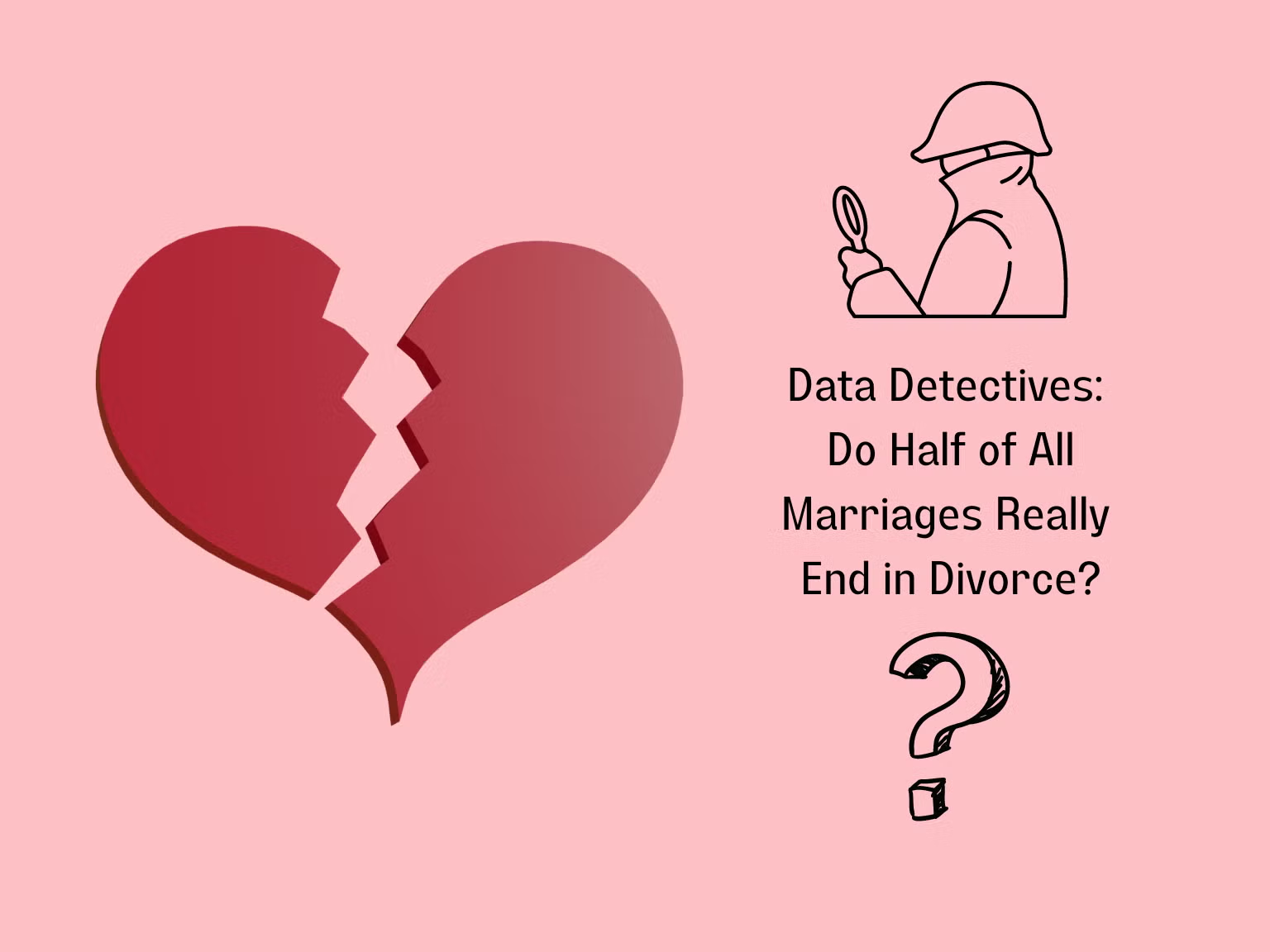Written by Connor Zahler:
One of the most ubiquitous claims in all of society is that 50% of all marriages end in divorce. It’s been brought up in fights about the course of society, lampshaded by romantic comedies, played straight by romantic tragedies, and is generally omnipresent. As with all common claims, it usually goes uninvestigated or remarked upon and is simply accepted as fact. That isn’t the QMSS way, of course. In this article, we’ll trace the source of the original claim, look at some more recent figures, and remark on some difficulties in calculating a “divorce rate.”
The Claim
It’s hard to find one formal statement that “half of marriages end in divorce” can be traced back to, but we can trace the debunking of it. Many of the debunking articles I found online (including this one from Insider and this one from a divorce specialty law firm) link back to a 2005 New York Times article by Dan Hurley. Hurley attributes the error to a misuse of statistics. In 2003, for example, 7.5 people got married per 1000 people, while 3.8 got divorced. Divide 3.8 by 7.5 and you end up with almost exactly fifty percent. Aha! Half of all marriages end in divorce, clearly.
Not So Fast
These figures are called the crude marriage and crude divorce rates, but they don’t tell the whole story. The main issue is that those 7.5 people who get married likely don’t include the 3.8 people who get divorced; the two statistics capture different populations. Researchers quoted by Hurley prefer to “calculate how many people who have ever married subsequently divorced.” If you look at it that way, the number peaked in the ‘70s around 40%, leveled off in 1980, and has been subsequently declining. That’s right: marriages around now might be more stable than those in the past.
Uncertain Second Marriages
A corollary of the idea that half of marriages end in divorce is that the numbers are even higher for marriages after the first. I’ve even heard speculation that a higher rate of divorce for second and third marriages might drag the general statistics about divorce up. The numbers, though, are far from certain. A 2013 report from the UK found that second marriages are actually more stable than first marriages, with a 14% lower divorce rate for them. More rigorous studies, such as this 2015 propensity score analysis, have found that “remarriages have consistently demonstrated higher rates of divorce” but caution that there isn’t enough evidence to infer a causal relationship.
What is Love?
If the idea that half of all marriages end in divorce has worried you, you probably have less reason to fear than you think. As some of the stats in this article have shown, the number is probably lower than 50% and ticking downward. Of course, people prone to worrying can always find other stats to be concerned about; did you know that a more expensive wedding ring is correlated with a higher rate of divorce? The other lesson from these stats is that statistics never tell the full story. Each and every relationship is unique, and something as indescribable as love can’t be easily communicated through the numbers.

